WORDS: ALEX PRINS | PHOTOS: ALEX PRINS & JAMES CONNOLLY
To love airshows is almost to accept that things are never quite as good as they used to be, they are like an ageing sportsperson whose championship years are long behind them, or a legendary band who don’t have the same energy now they’re old enough to draw a pension. This gradual decline is almost universal, but not quite: there remains one exception to the terminal decline of the airshow. Indeed, there is an Antidote.
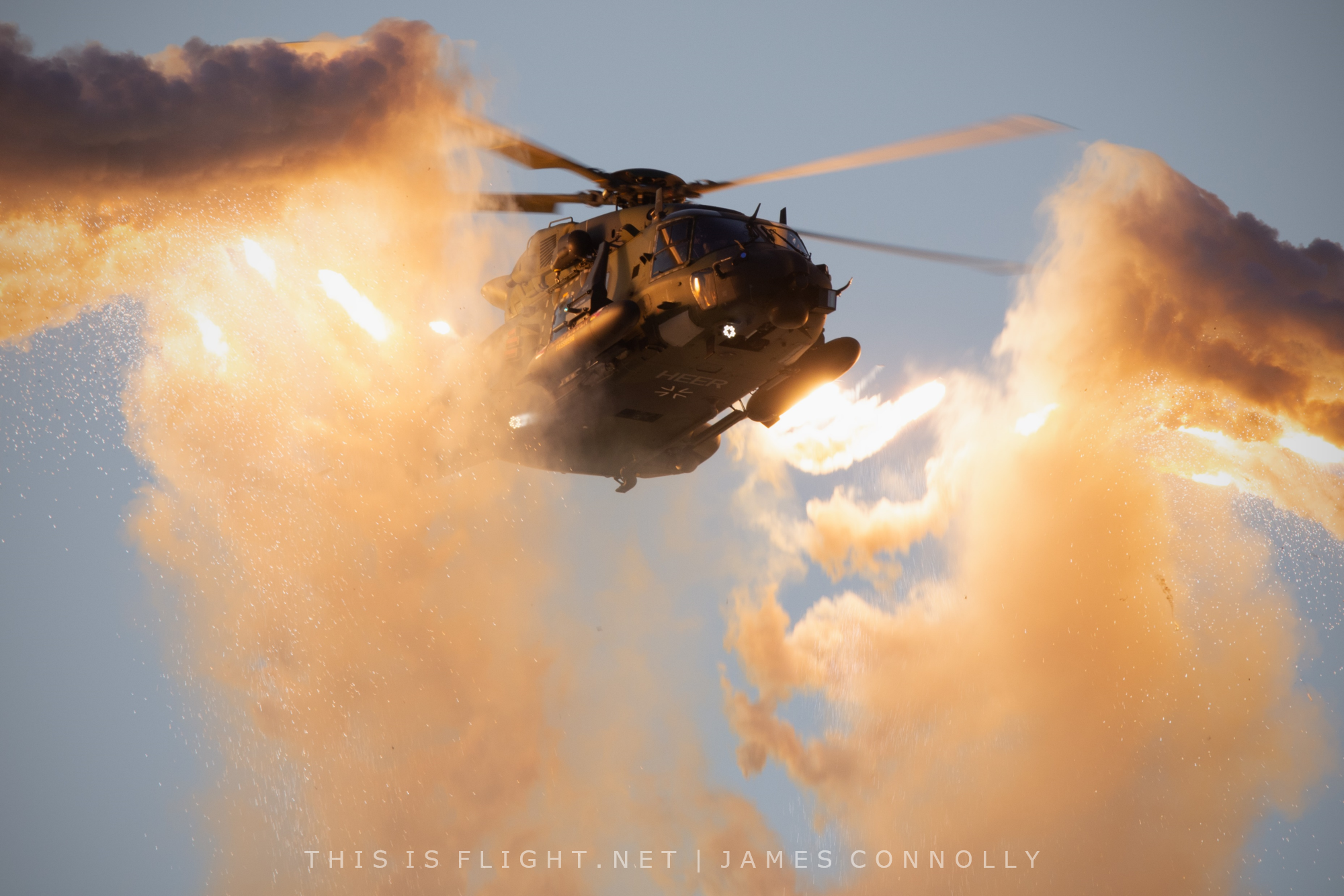
Few other established venues can boast an expanded event this year, yet the 2025 Antidotum Airshow Leszno saw its biggest audience yet, with over 75,000 tickets sold across the two-day event – 15,000 more than last year. It is no wonder that this event is growing in popularity with international visitors either, when a general admission ticket could be purchased for as little as £6 ($8), and return flights from the UK alone were available for less than the price of a day ticket to many British airshows. The organisers could charge many times over and still draw a massive crowd, however this event is not run by profit-thirsty suits, but by a passionate crew whose best interests are the airshow and the townspeople. Thus, they run at a modest profit, hosting tens of thousands of visitors who never feel exploited. This has the added benefit of broadening the show’s audience, too; Leszno can surely be credited for exposing aviation to many thousands of people who would never dream of forking out £50 to see some aeroplanes, but for whom parting with £6 to attend the city’s biggest event of the year is much more palatable. This is a show that is run in the right spirit and I believe that ethos is tangible to anyone involved.
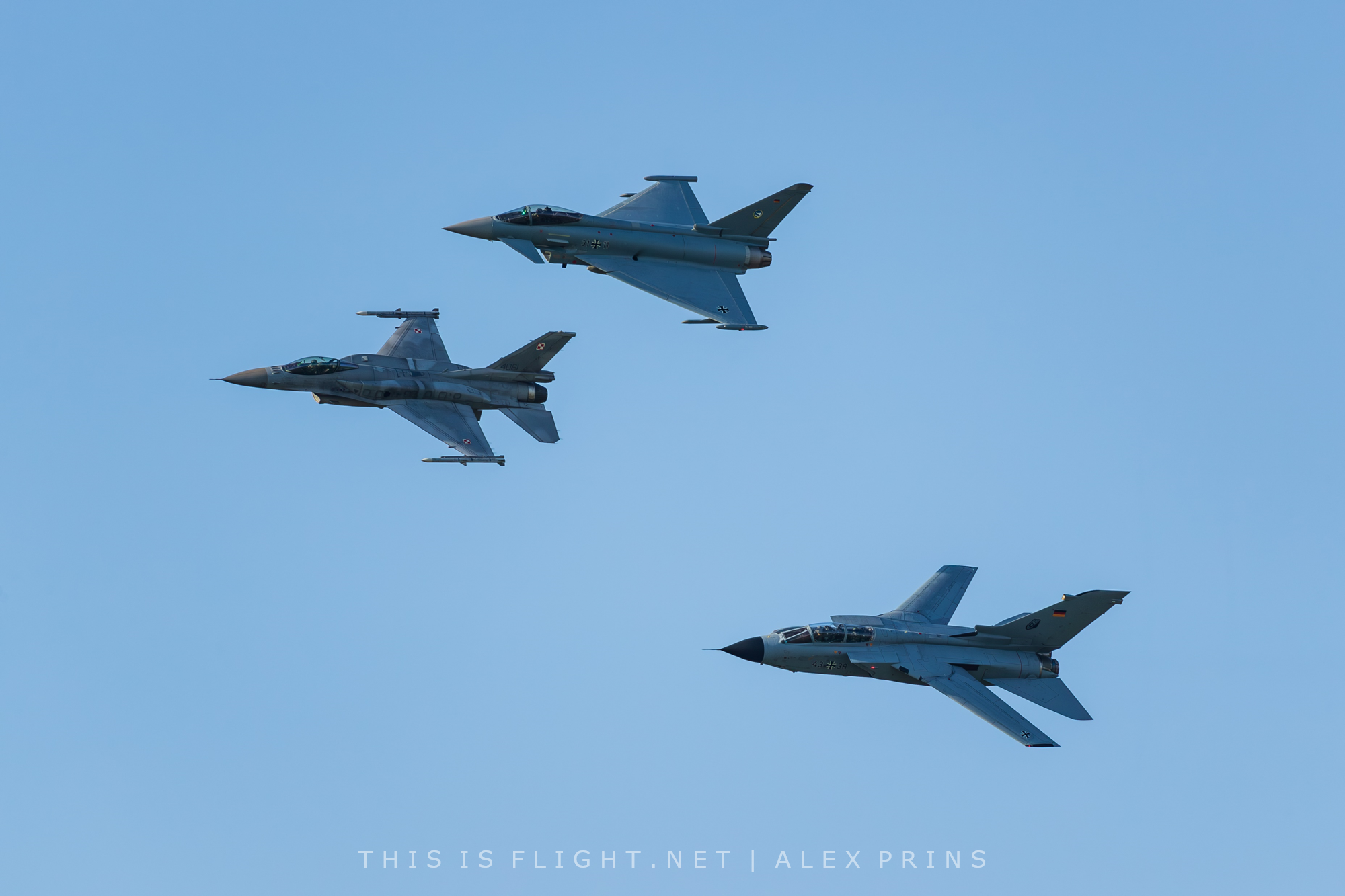
This atmosphere is what encourages return visits by display teams such as the German Air Force Eurofighter Typhoon, which itself has grown in stature in recent years. Having first flown at Leszno in 2022 as part of an exploratory schedule, the team now headlines some of the biggest shows in Europe, but still holds a special place for its “home” airshow in Leszno. This relationship has since been fostered by both parties, and as a result the collective Bundeswehr contributed three further displays this year.
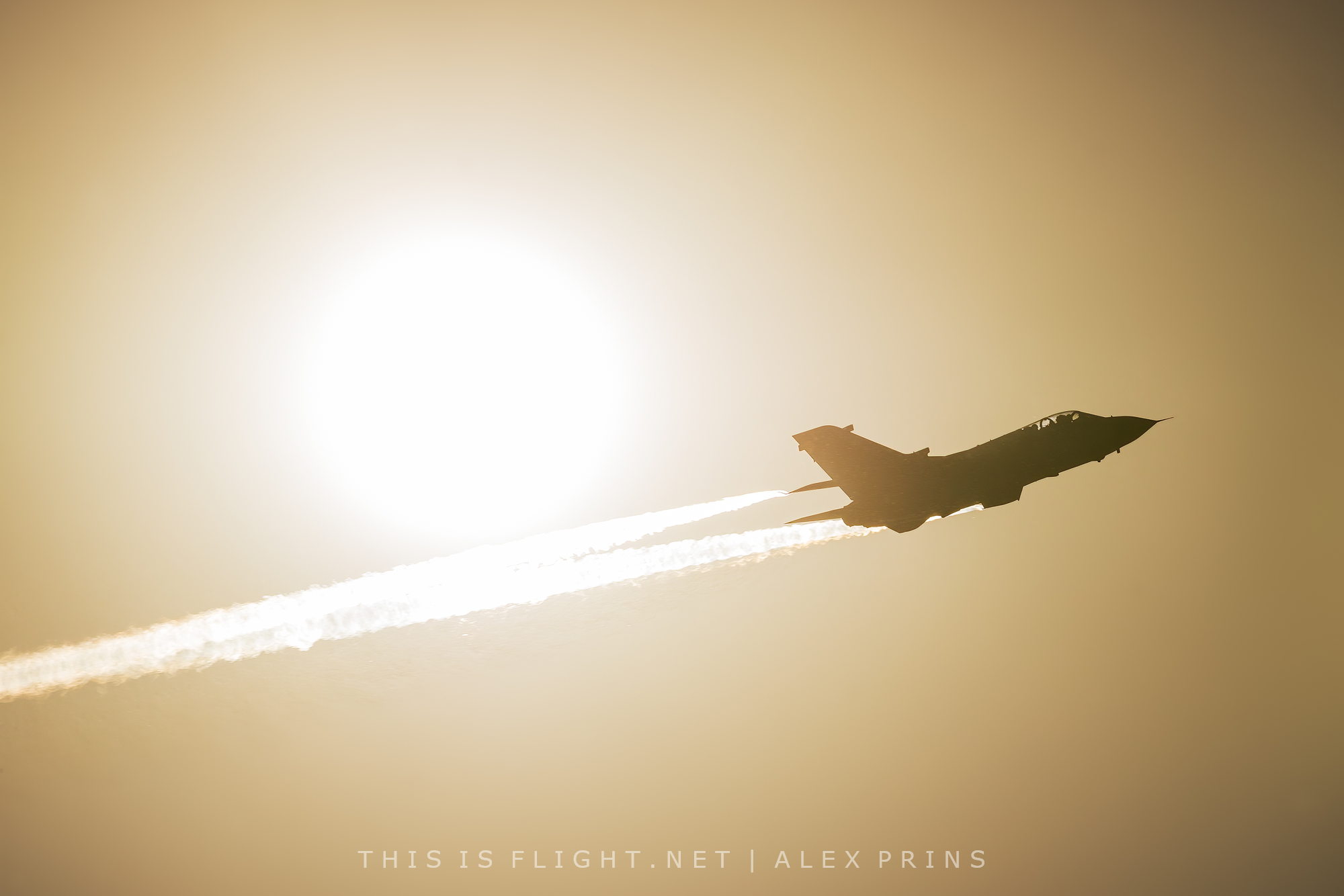
The most eye-catching debut was by the Air Force’s new Tornado IDS team, whose initial schedule was for two displays, in Poland and Malta respectively. While this was news for many, it was the culmination of several years preparation with the Antidotum Airshow, following exploratory invitations through the NATO Tigers association and visits to previous events by staff associated with the type. The display itself was a promising first showing: while not as gutsy as the comparable Italian display of a few years ago, it offered a pleasing combination of real-world tactical manoeuvres as well as some classic airshow passes, in a well-composed routine that minimised the repositions effectively. The airframe used for the public airshow displays was also specially painted to celebrate 50 years since the Tornado’s first flight, and benefited from an early-evening display slot for an especially photogenic first outing.

The centrepiece of the German Air Force’s contribution was the surprise ‘Badge Formation’, celebrated with various merchandise on sale at the show. On Friday this formation was composed of the Polish F-16 display jet, flanked by the German Air Force Tornado and EF-2000; Saturday saw a second Typhoon join the formation for its trio of passes, with the Tornado dropping into trail. Though it will not win prizes for being the tightest formation, with the Tornado visibly struggling to maintain position during the turns, this unique combination was given the headline sunset slot and created some of the most beautiful imagery of the weekend.
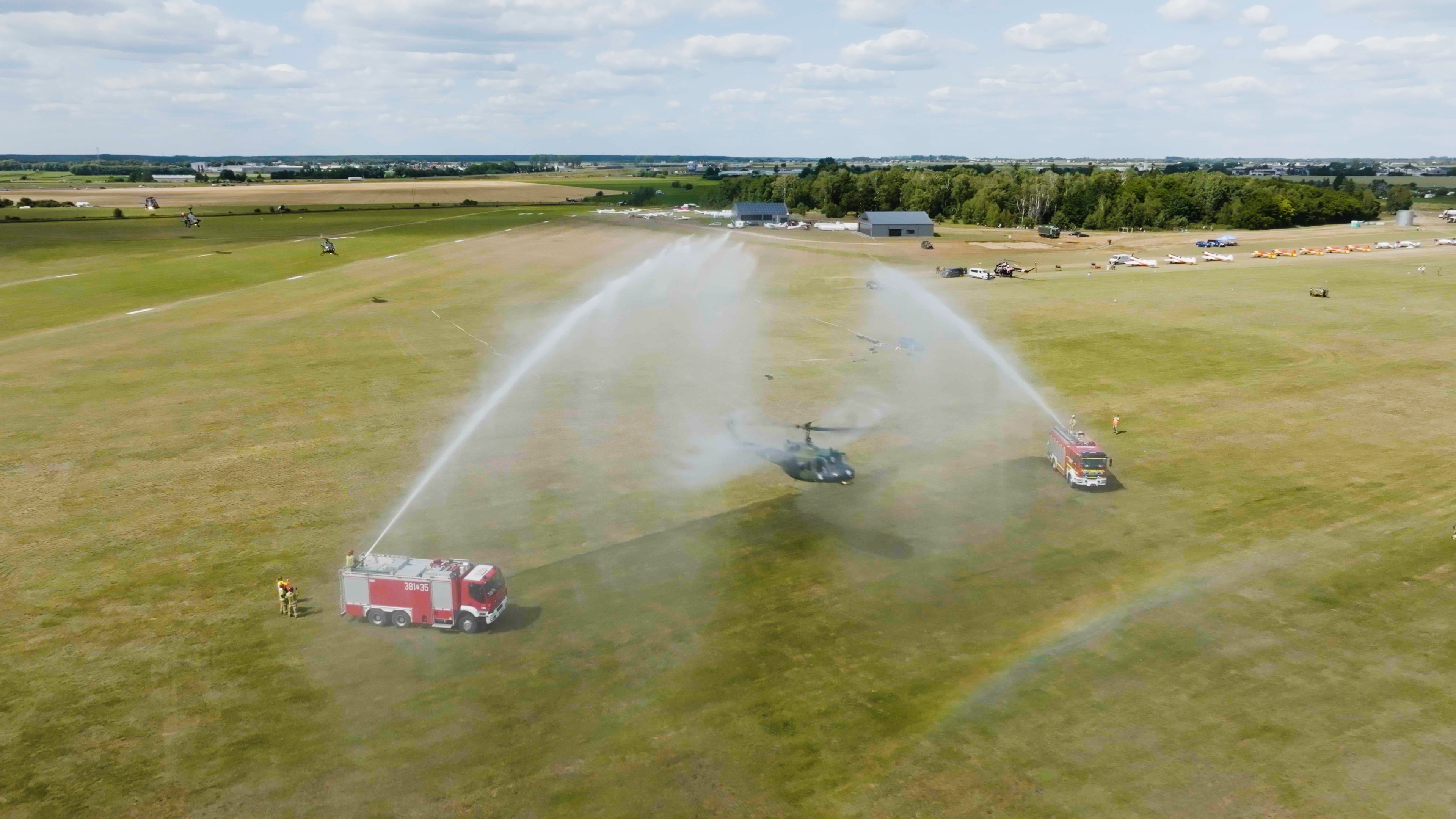
Along with the Air Force, the German Army dispatched two of their solo displays to Leszno: the NH-90 and EC-665 Tiger respectively. Both were appearing in Poland for the first time, and the Tiger display was also making its European airshow debut. The pair were part of the event’s ‘Grand Opening’ formation sequence, alongside Heli Solution’s Bolkow Bo-105 and UH-1 Huey (making its own airshow debut), representing four German Army types past and present. The quartet first approached the crowd in trail through an arch of water from the based fire trucks, before reforming into a diamond for a flypast and formation break. At this point I should concede that this sequence (and, indeed, the aforementioned ‘Badge Formation’ routine) was largely designed by This is Flight’s own Adam Landau, so I am duty bound to report it was ‘pretty good, actually’ and ‘the perfect way to commence the circa 7-hour flying display’.
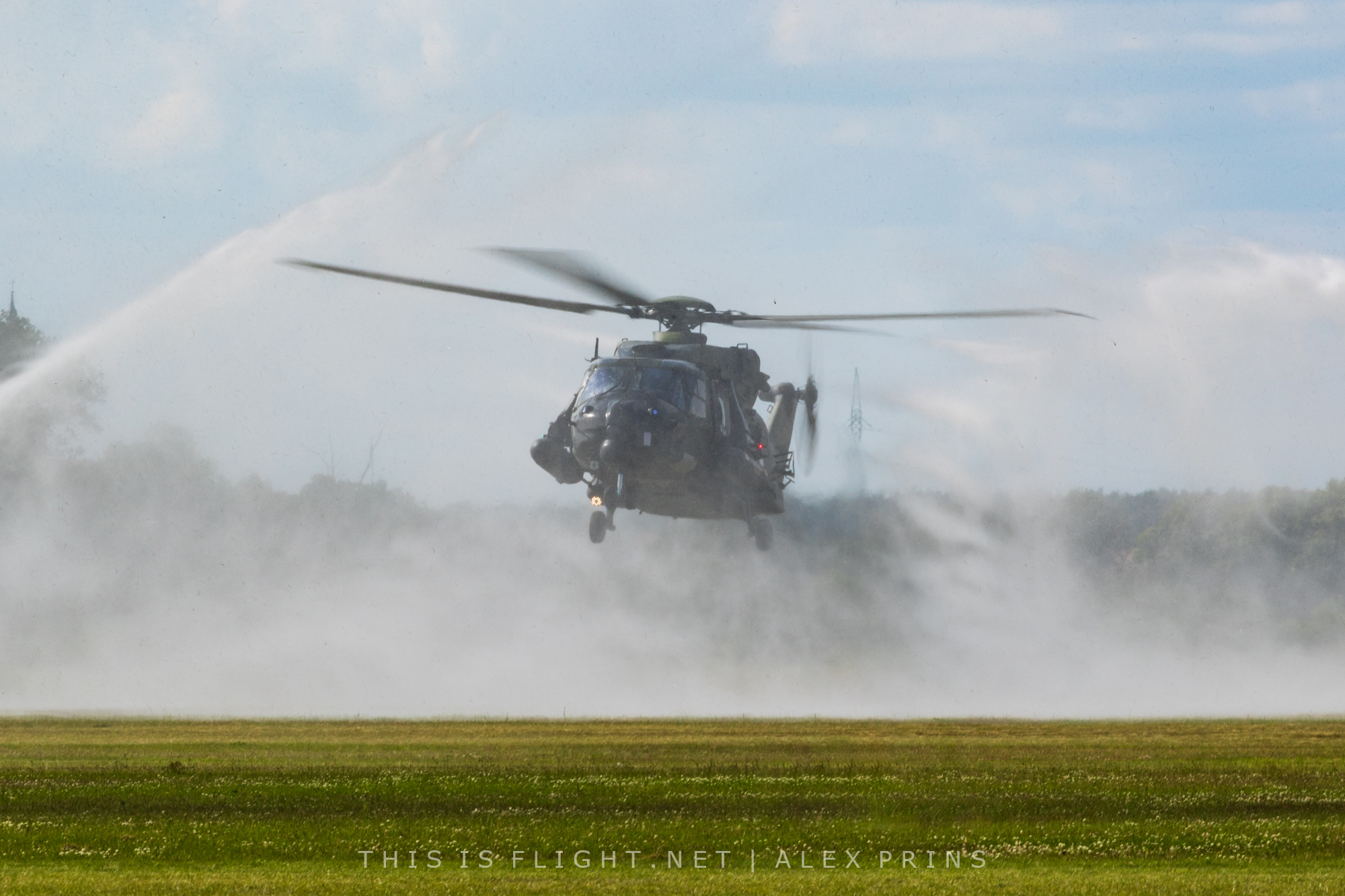
Both the German Army displays then flew full solo displays later in the day. The newly-established Tiger demo team of the 36th Combat Helicopter Regiment flew an extremely punchy routine that highlighted both its potent combat capabilities and aerobatic prowess. Given the German Army’s rich history of helicopter aerobatics, which have been sadly missed since the retirement of their Bo-105 fleet in 2016, the Tiger team have more than taken up the mantle with a display that includes loops, steep pedal turns and even a split-S.
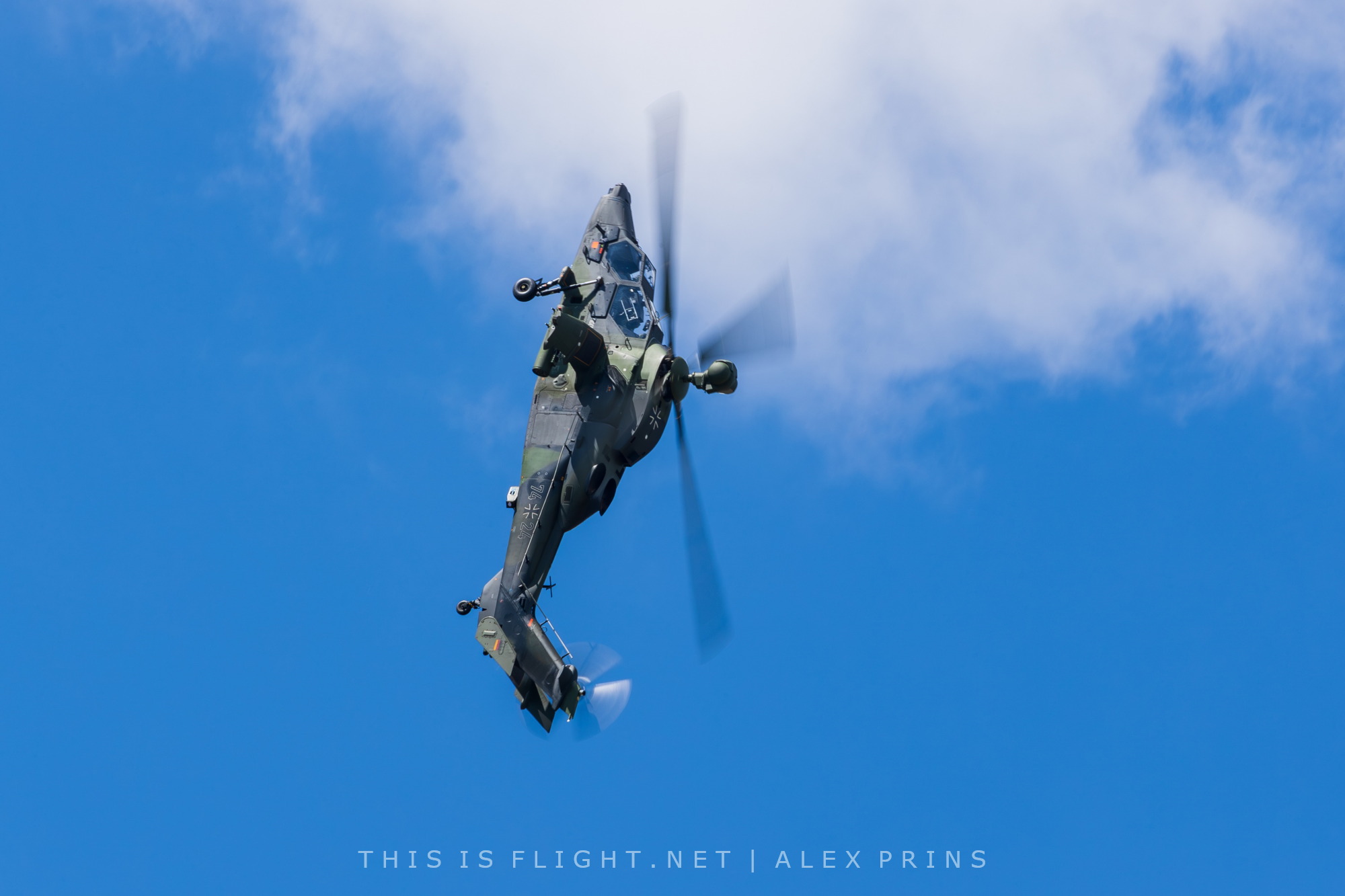
The last of the four German military participants was the NH90 solo display – a familiar sight at airshows across Europe, but like so many well-known acts it is simply indescribably better at Leszno. Perhaps it was the fact it flew at sunset, or perhaps it was the generous use of flares, but this was a performance that had plenty of presence and was as eye-catching as any of the fast jets.
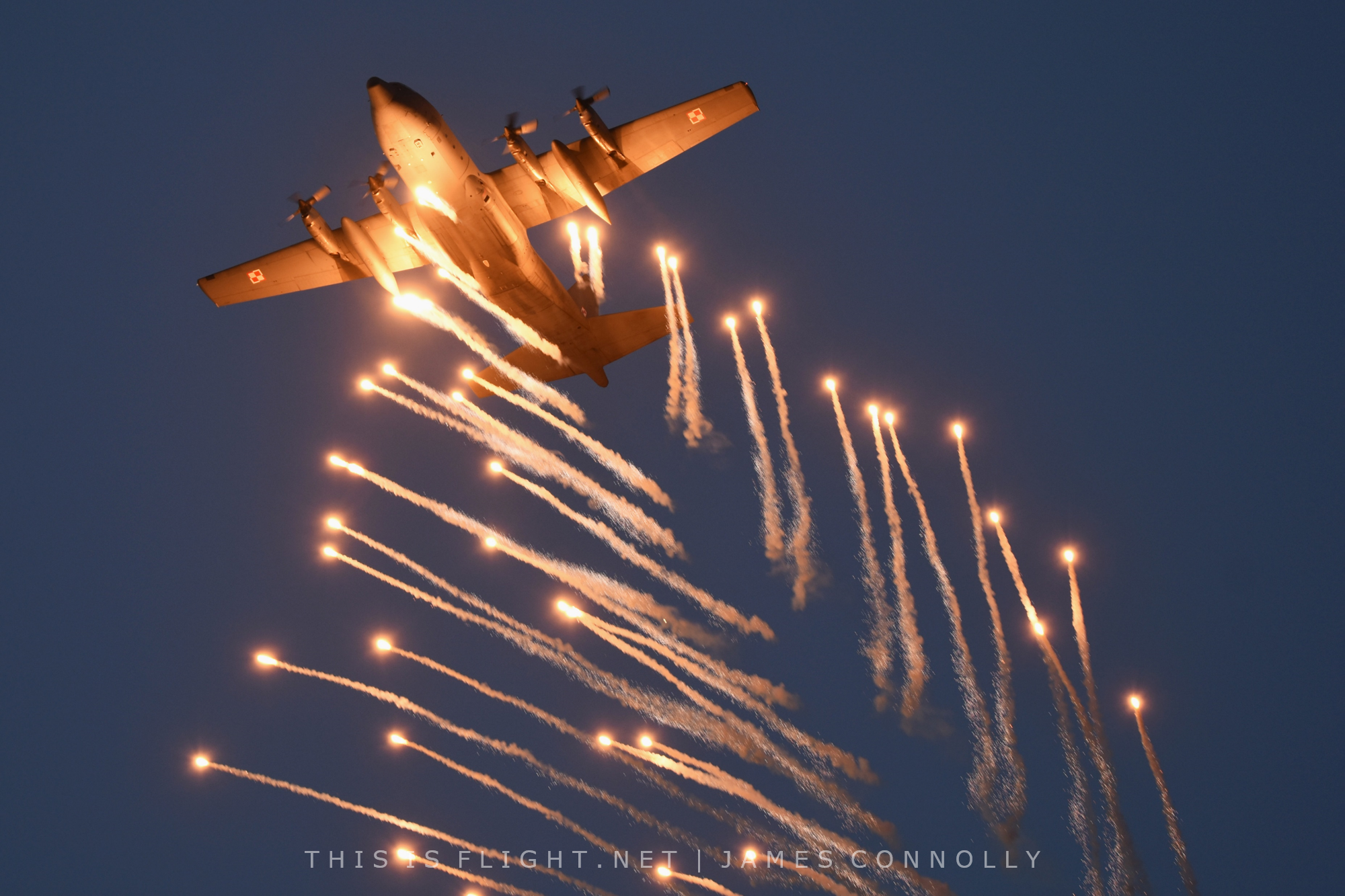
Oddly enough, the German military made a far greater contribution to the show than Poland’s own. This year saw one of the smallest Polish Air Force contingents that the Antidotum has ever hosted; just a C-130E mini-display and the Tiger Demonstration Team’s F-16C. It could have been worse still; even this meagre showing was unconfirmed by the air force until the last minute, with things falling into place in the final fortnight.
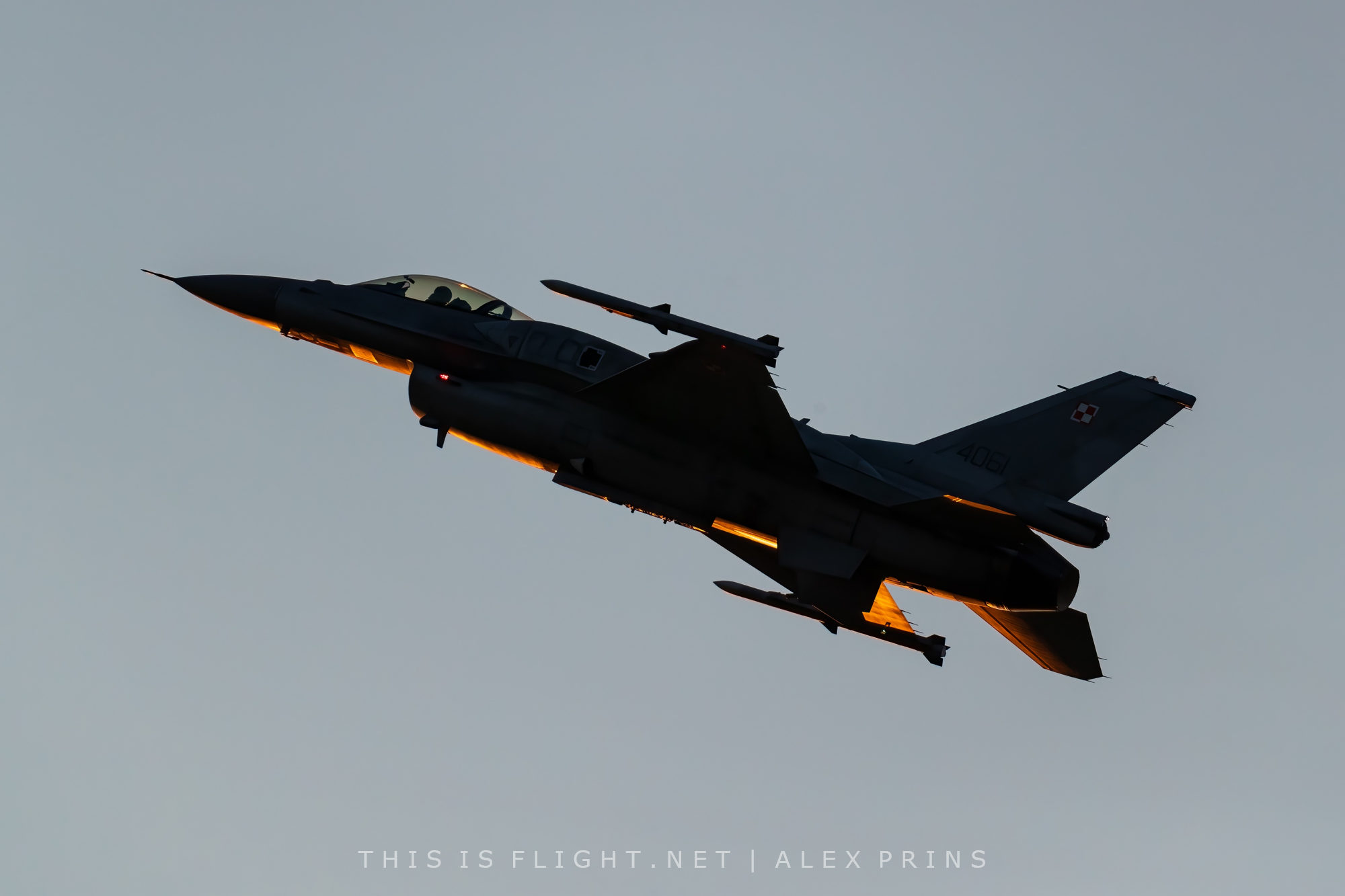
Both displays were also affected by considerable uncertainty as to whether they would be allowed to use flares. Prevailing wisdom was that the F-16 would, but the C-130 would not. The final decision came down to the wire (it wasn’t made until the flying display was already underway!) but in the end, the opposite proved true; Major Maciej Krakowian put the F-16 through a stunning display routine without his usual countermeasures, while the C-130 concluded its display with a generous flare dump – albeit at sunset, rather than in full darkness. The Hercules’ display as a whole was a shorter, higher and less aggressive affair than the masterpiece we enjoyed at the last few Antidotums, in a disappointing metaphor for the Polish Air Force’s support of the show as a whole.
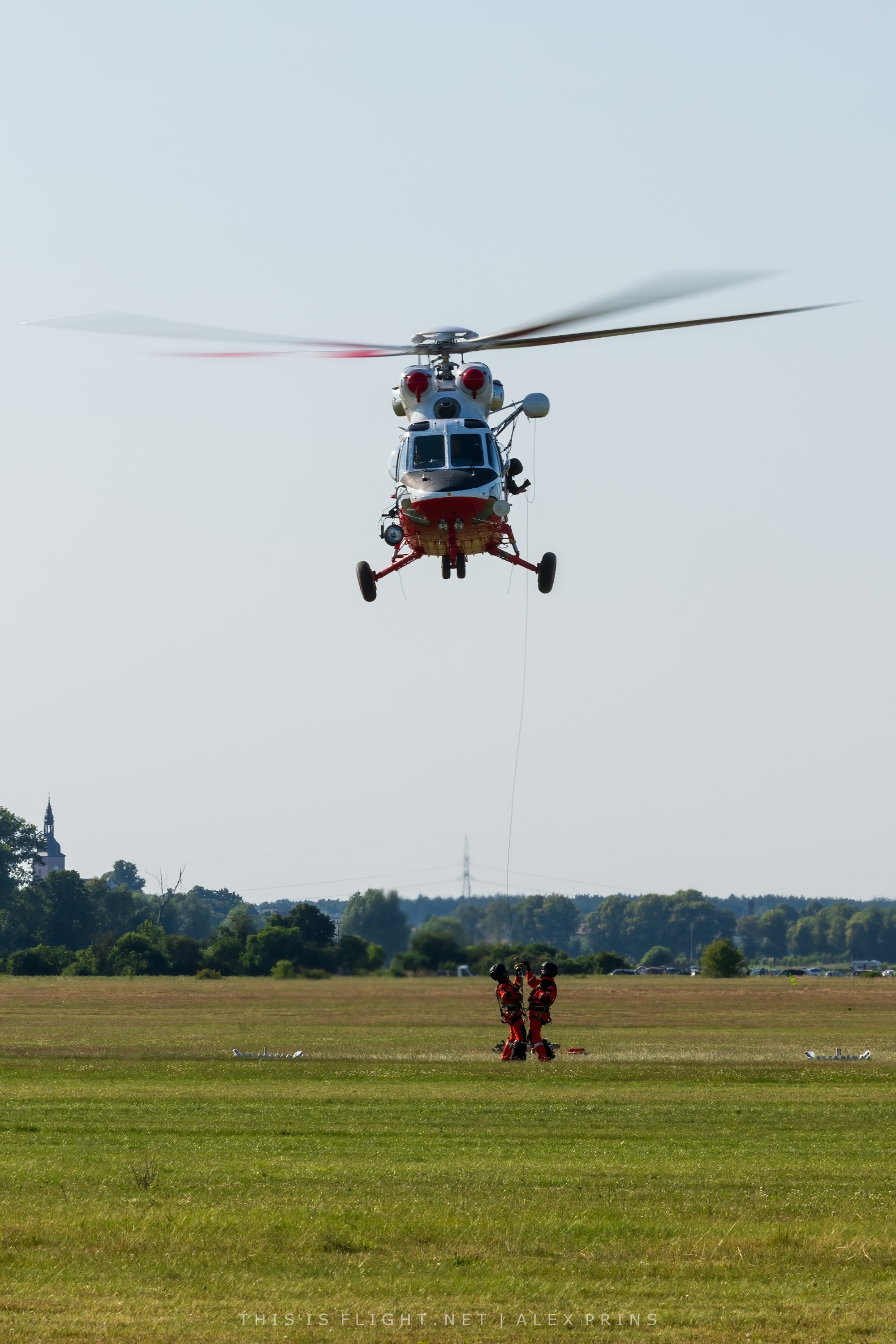
Two foreign air arms contributed displays this year: the Czech Air Force sent their brilliant W-3A Sokół display and the Slovenian Air Force sent its no less appealing PC-9M Hudournik solo routine. These are two more examples of displays that please audiences wherever they go, but have a certain extra ‘je ne sais quoi’ at Leszno that elevates them an extra few levels.
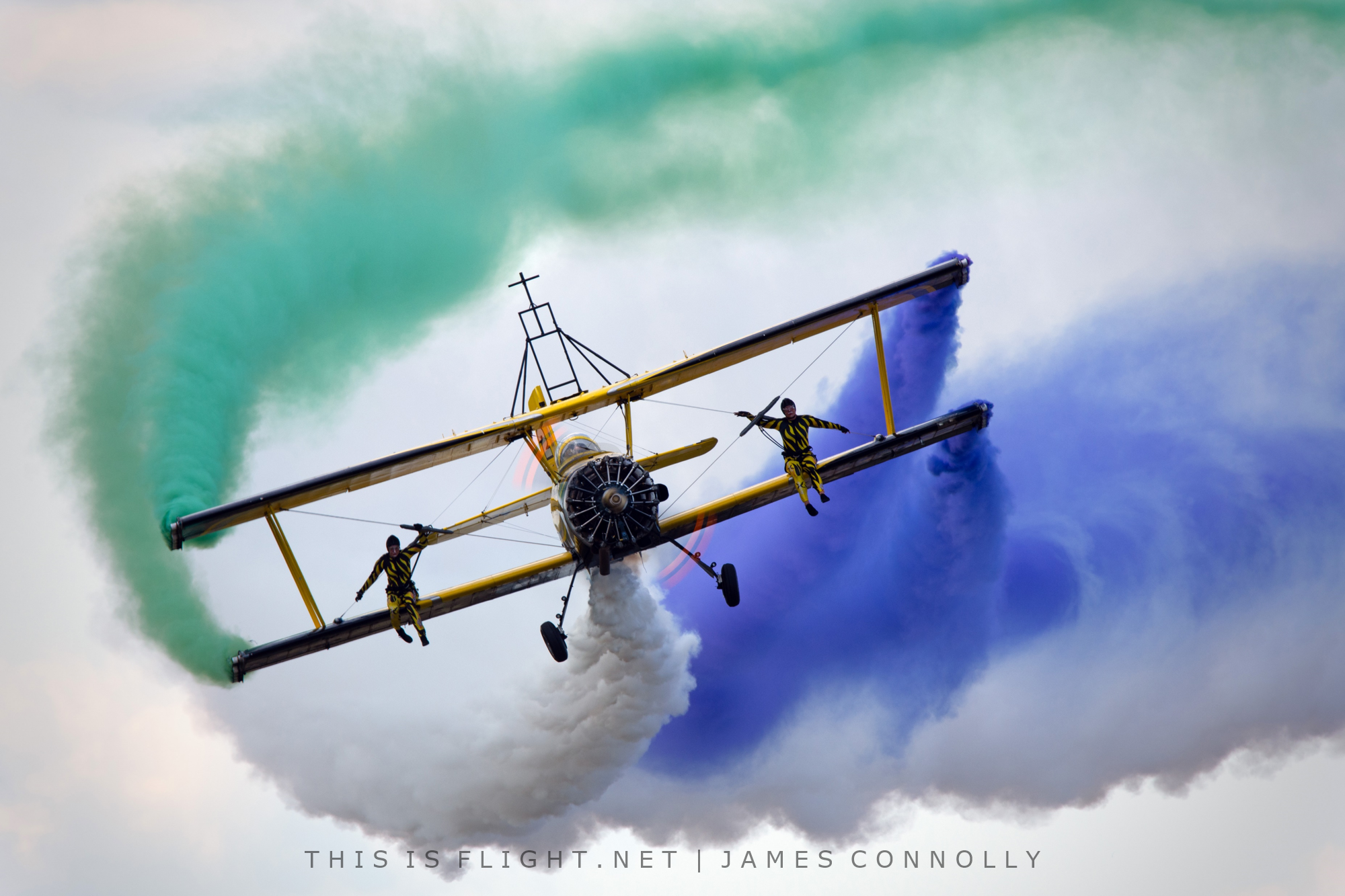
But Leszno is far more than a military airshow. Indeed, its appeal lies in the extraordinary variety that it presents. The daytime portion of the show included a gamut of family-friendly acts, from Scandinavian Airshow’s ‘Catwalk’ wingwalking routine to Luke Czepiela in the Carbon Cub, performing a daring stunt in which he drove underneath a trio of motorcyclists from the FMX Freestyle Family as they somersaulted from a ramp.
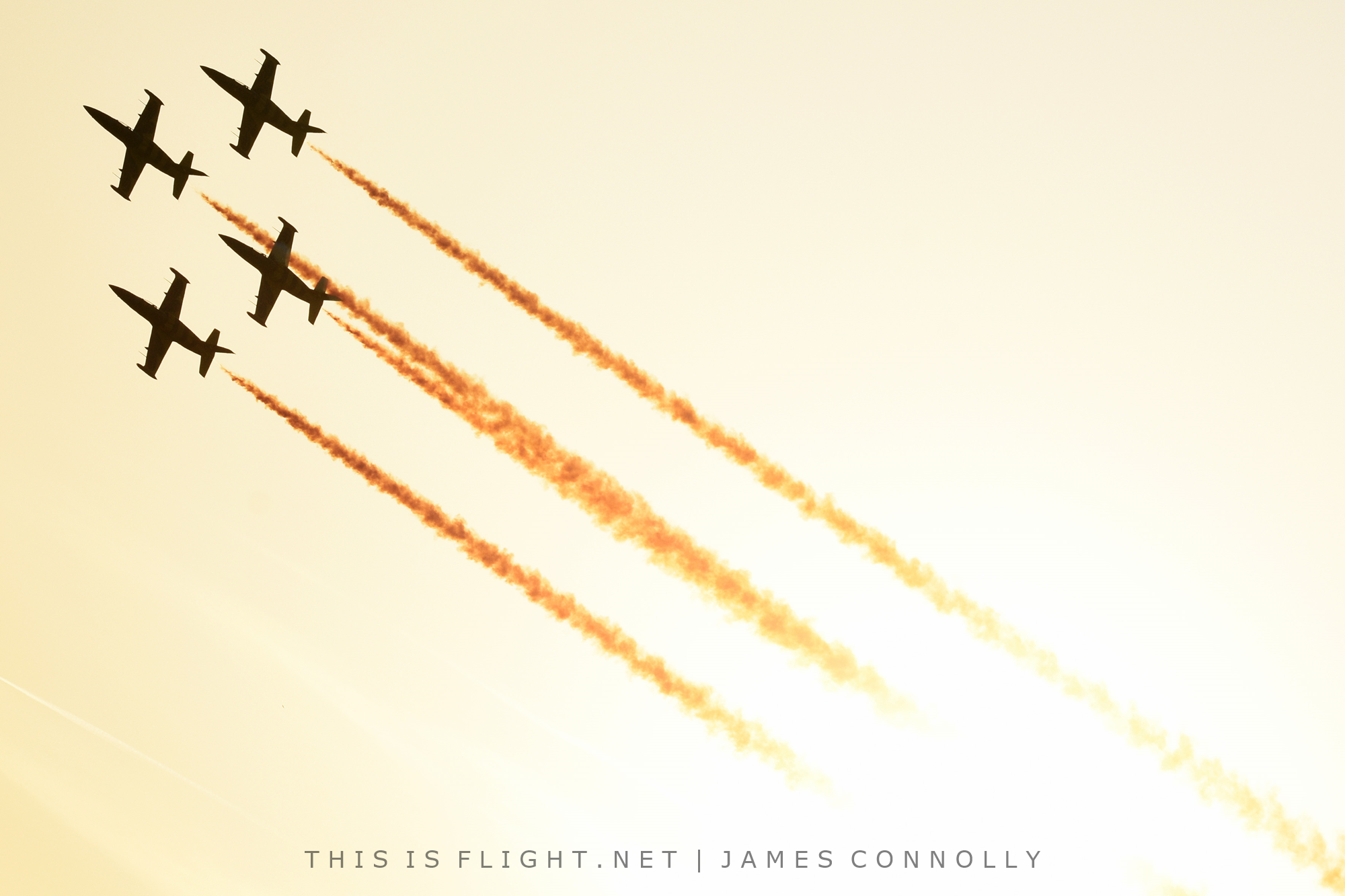
The show also attracted a trio of very high-quality formation aerobatic teams: the exceptional Flying Bulls with their four XA-42s, the Baltic Bees and their four L-39Cs and the Hawks of Romania with five Extra 330s. The latter two teams could probably have benefitted from shorter slot times – both had nearly half an hour and were scheduled in prime slots with excellent photographic conditions – but the displays were of a high standard. It was the first time that the Antidotum Airshow has hosted a fully-fledged jet aerobatic team; surely, given the show’s burgeoning reputation, it will not be the last.

There were quite a few warbirds to enjoy, too – though not as many as organisers had hoped. Several ‘long shot’ rarities had been tentatively booked in the knowledge that, in all probability, just one or two would actually make it. Sadly, none did. Of the more frequent airshow participants, though, Georg Raab brought his P-51D Mustang in lieu of his planned Spitfire display (that aircraft had suffered a last-gasp technical problem) and Fubar Aviation sent their Lim-2 (Polish licence-built MiG-15bis) for a solo display. Also on the classic jet theme, Bialo-Czerwone Skrzydla sent two TS-11 Iskras for a pleasing two-ship routine which has become rather more polished since their first formation displays a couple of years ago.
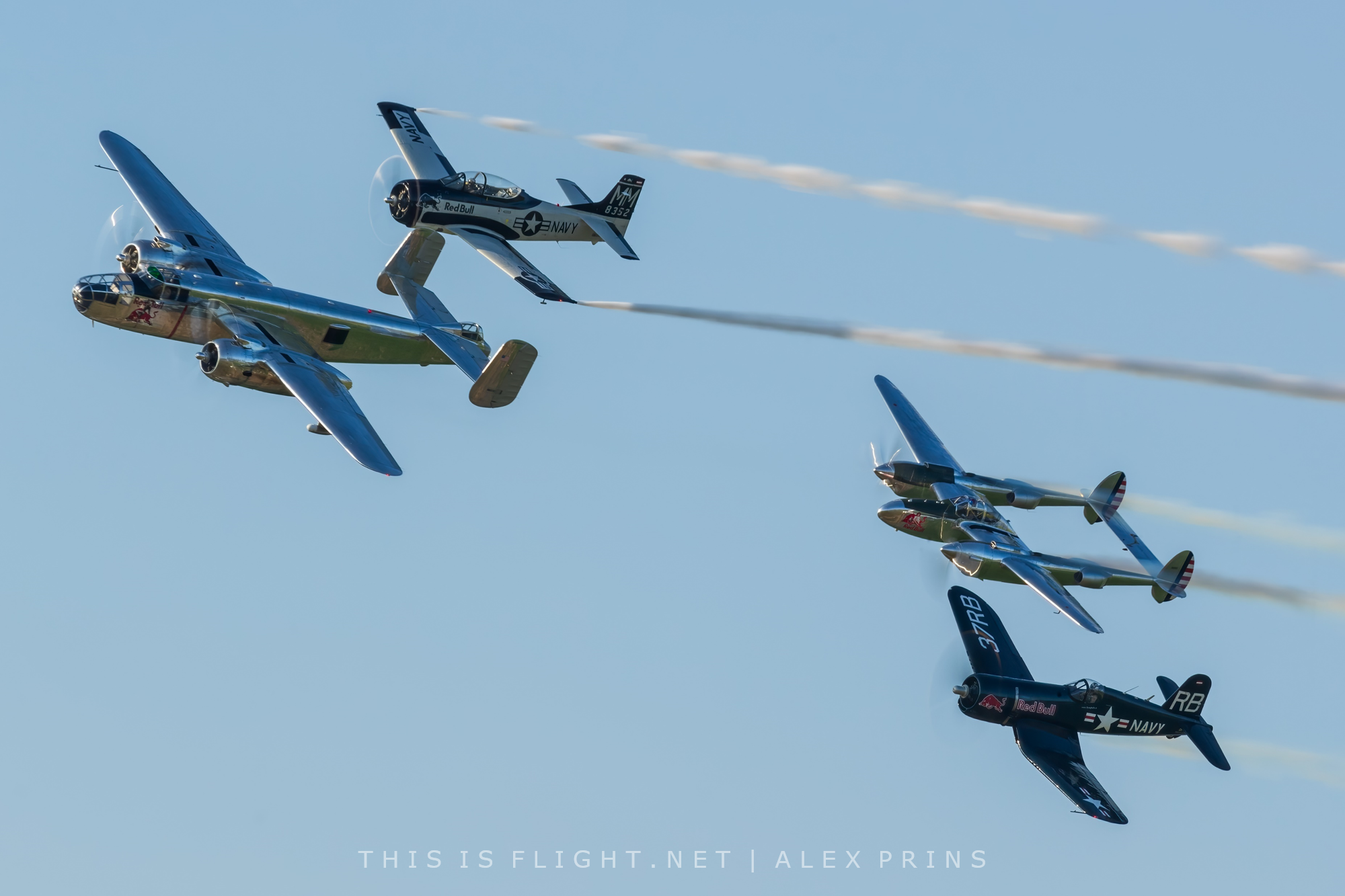
The Flying Bulls dispatched a quartet of warbirds comprising their B-25J Mitchell, P-38L Lightning, F4U Corsair and T-28B Trojan. Though allocated a slightly earlier display slot in recent years, and not benefitting from quite such stunning light, their display was a 25 minute masterclass in warbird flying, which mostly consisted of formation aerobatics by the Lightning and Corsair while the Trojan acted as the ‘joker’ flying solo manoeuvres beneath the formation.
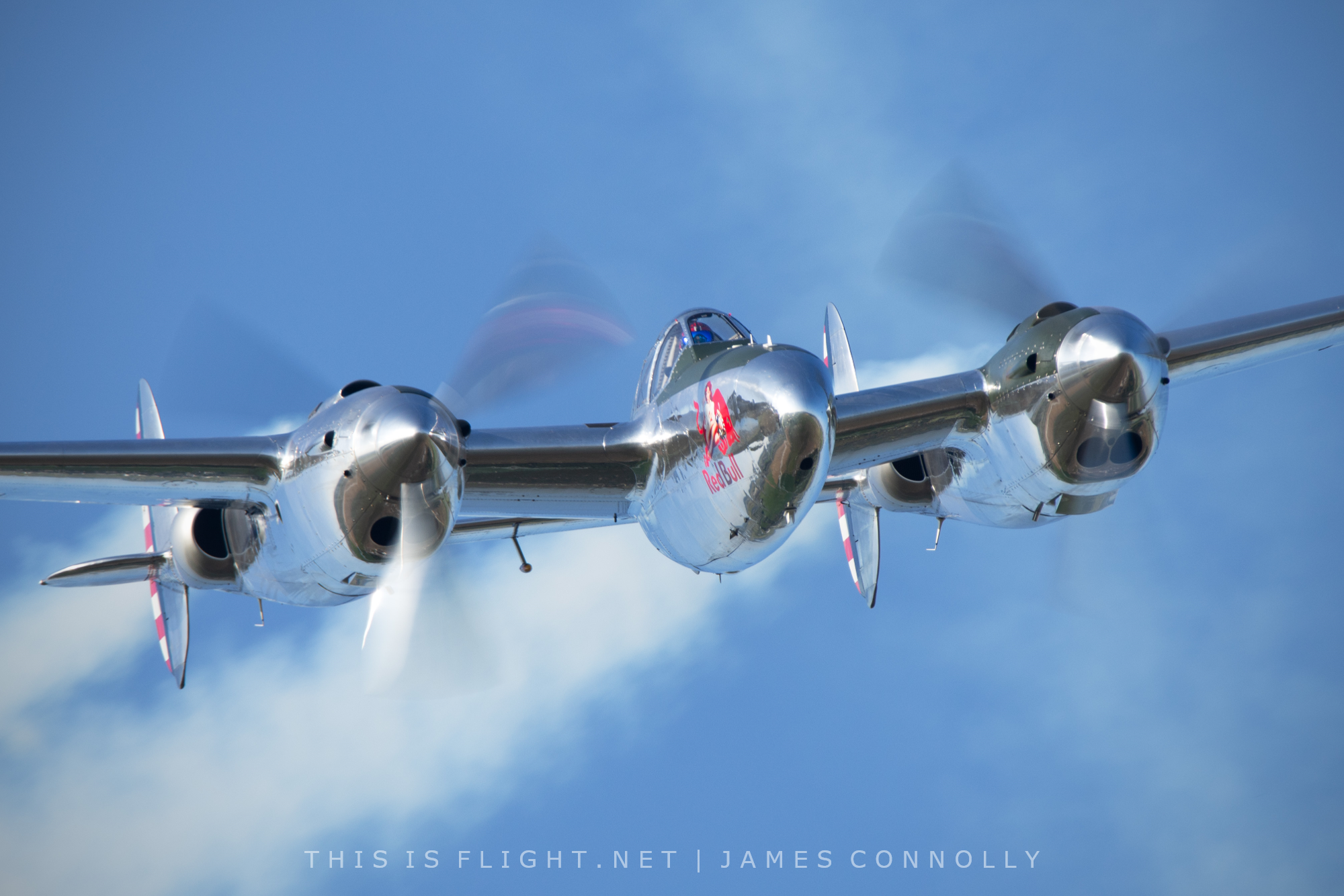
A vintage display of a very different tone was provided by Pterodactyl Flight and their fleet of replica WWI aircraft. These are all new-build microlights manufactured for film and TV work, but they have the appearance of an RAF SE5a, Fokker E.III, Fokker D.VII and Fokker DR.I. They engaged in a very dynamic, free-wheeling tailchase, in which the pilots fire real blanks from their guns and genuinely seem to be engaged in high-stakes aerial combat, in stark contrast to the unconvincingly graceful-but-predictable tailchases that account for the majority of combat re-enactments seen at airshows. The performance was made only more impressive by the use of props, re-enactors and special effects on the ground, which included a further Fokker E.III replica and a German truck which got dramatically and unceremoniously blown up during the SE5a’s strafing runs.
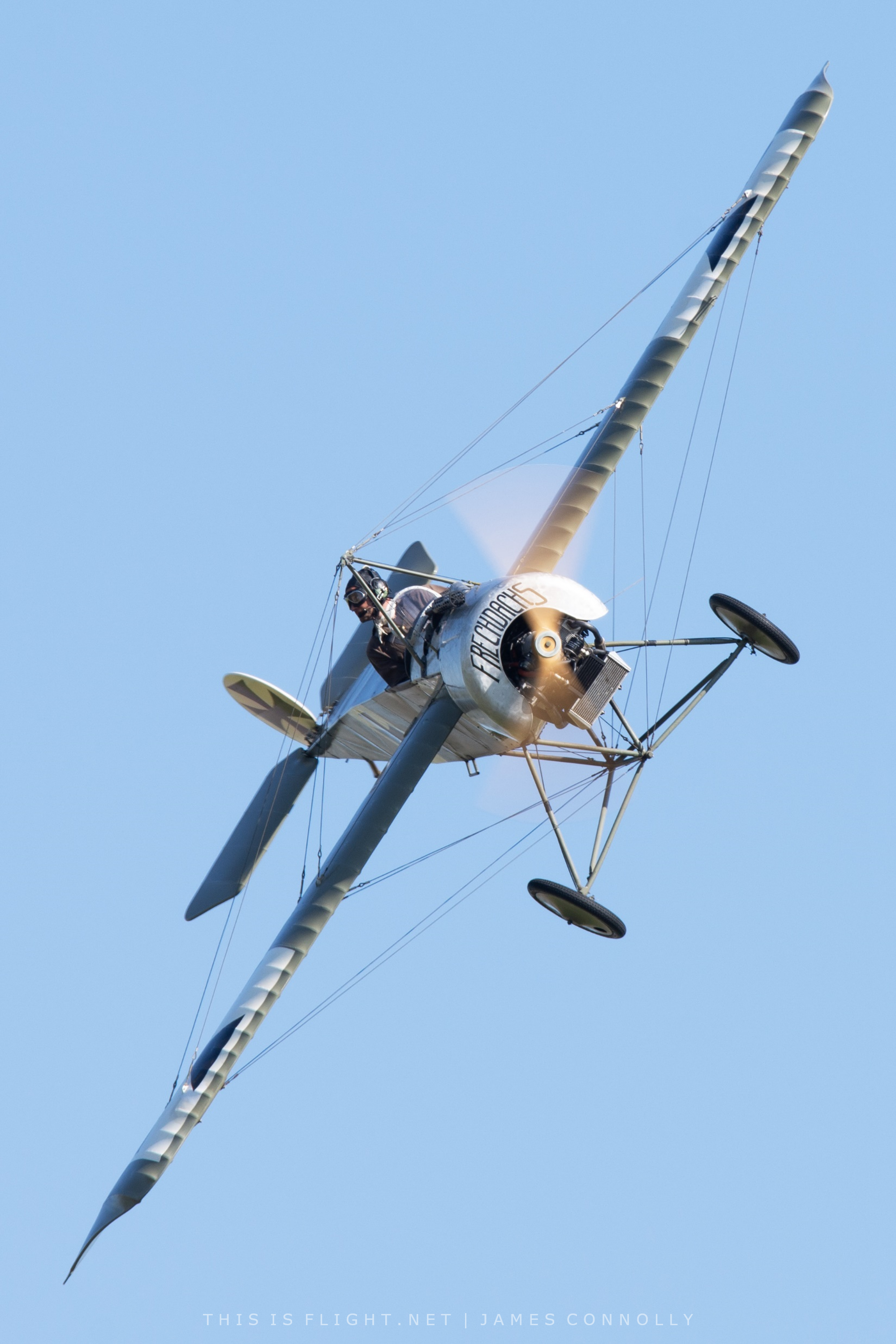
Leszno is nothing without a few surprises, and the final act of the Saturday daytime show was about as big as a surprise can realistically get. After a cryptic series of airline-themed announcements, the crowd was invited to look over their left shoulders to witness the imposing silhouette of a Wizz Air Airbus A321 barreling in at a rakish angle of bank for the first of three passes. This display, though kept as a secret, had been years in the making – and much gratitude must be expressed to Wizz Air for providing an aircraft and eight hours of simulator training in order to facilitate this one-off performance.
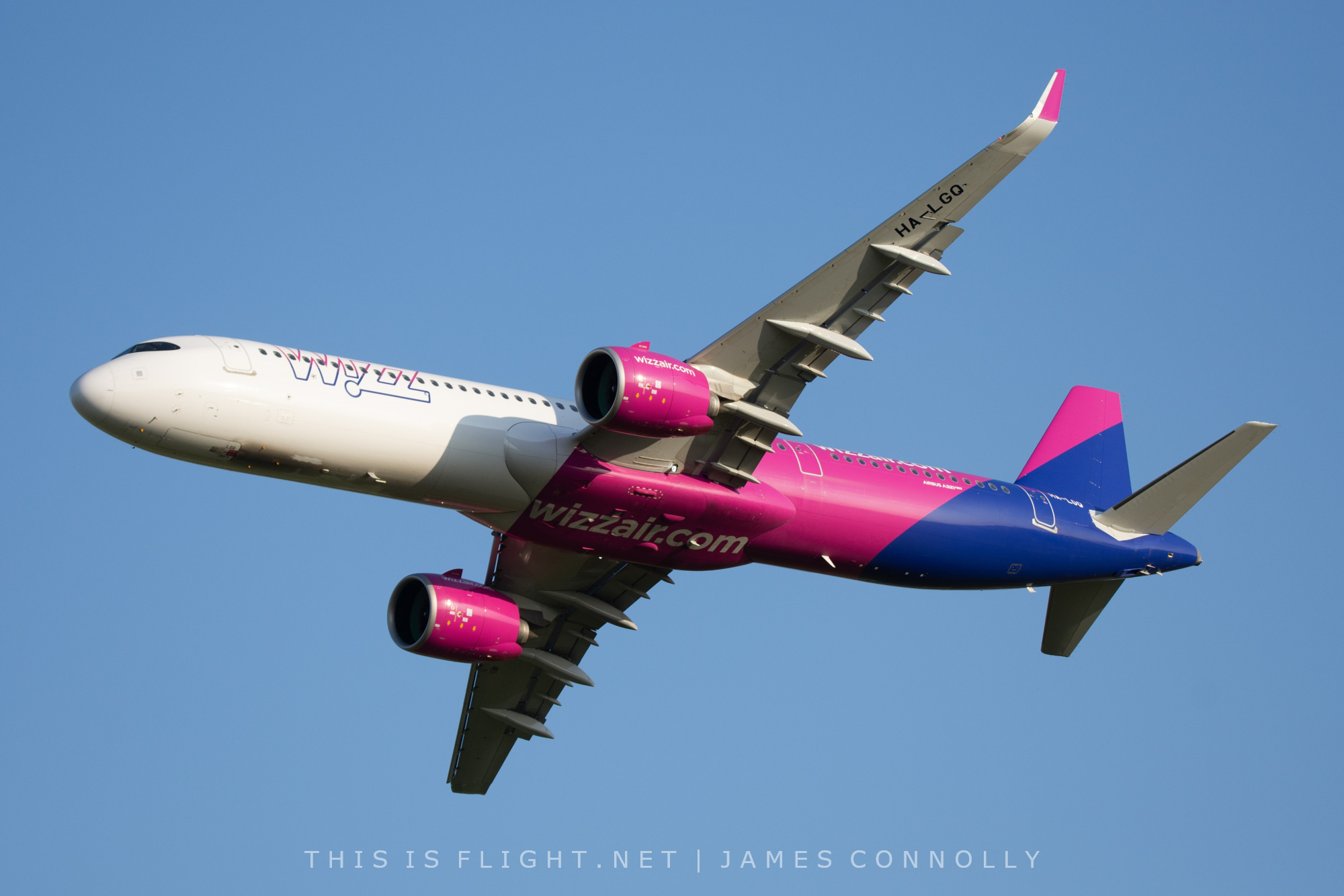
Following the daytime portion of the show, there was a short 20 minute break in the flying display. This was very much the Antidotum version of a “break”, though, because it included the mass launch of about 20 hot air balloons, with three paramotors from Fly2Live flying among them. This was one of the more effective uses of hot air balloons that we’ve seen at an airshow, and a reminder that brevity and density is often more powerful than quantity. As the balloons drifted over the crowd, they were accompanied by live music from the Wind Cameral Orchestra, which provided the backing for most of the performances from this point onwards.
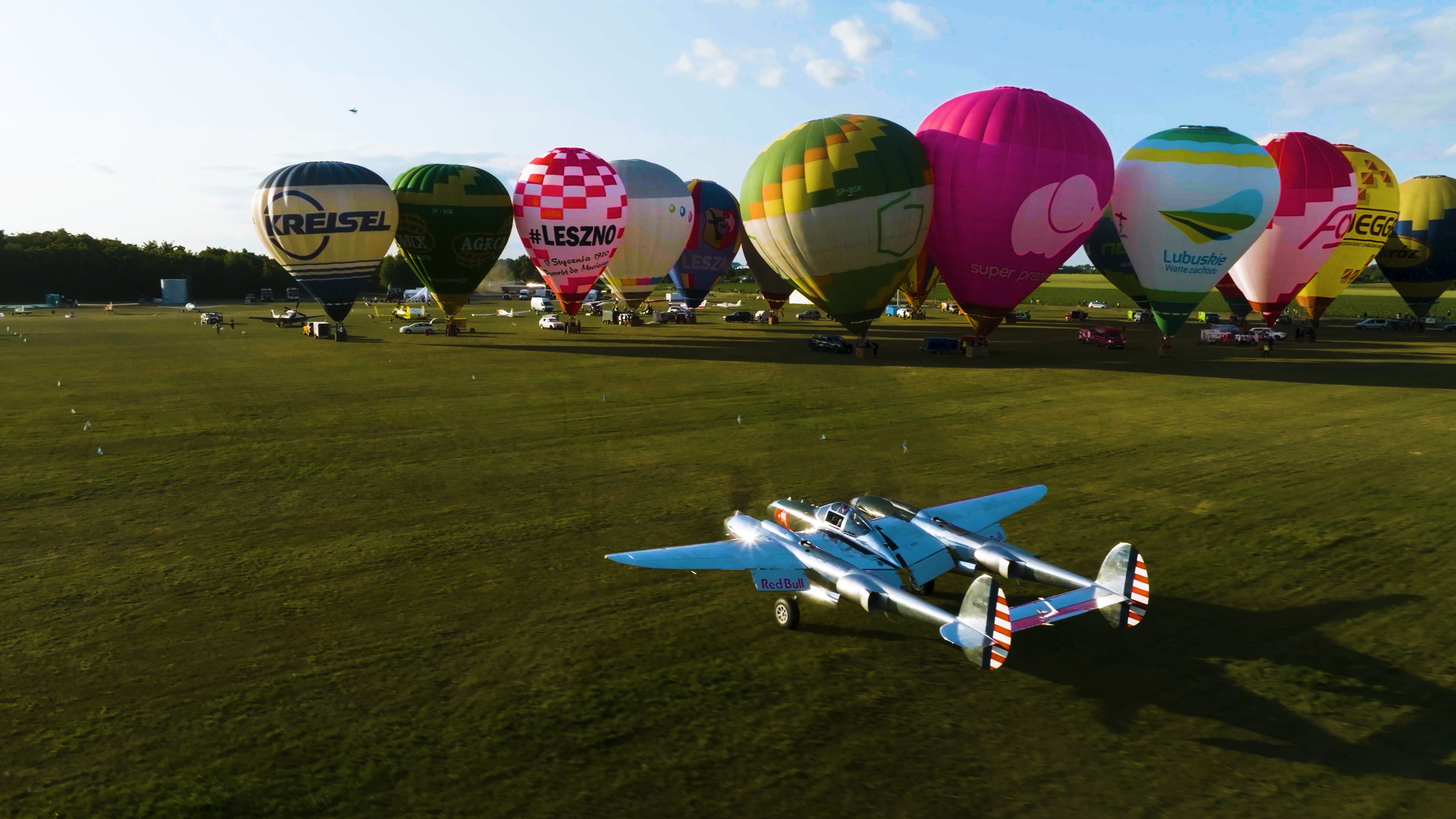
Flying after the break, one of the two glider formation teams present at the show: Team Blanix and White Wings. The two teams took turns to fly in the conveted sunset slot, with one doing so on each day. They were both phenomenal performances and had quite different characteristics, with Team Blanix’s graceful display creating an atmosphere of serenity while White Wings brought a little more energy. In both cases, the crowd was clearly totally absorbed and thoroughly captivated.
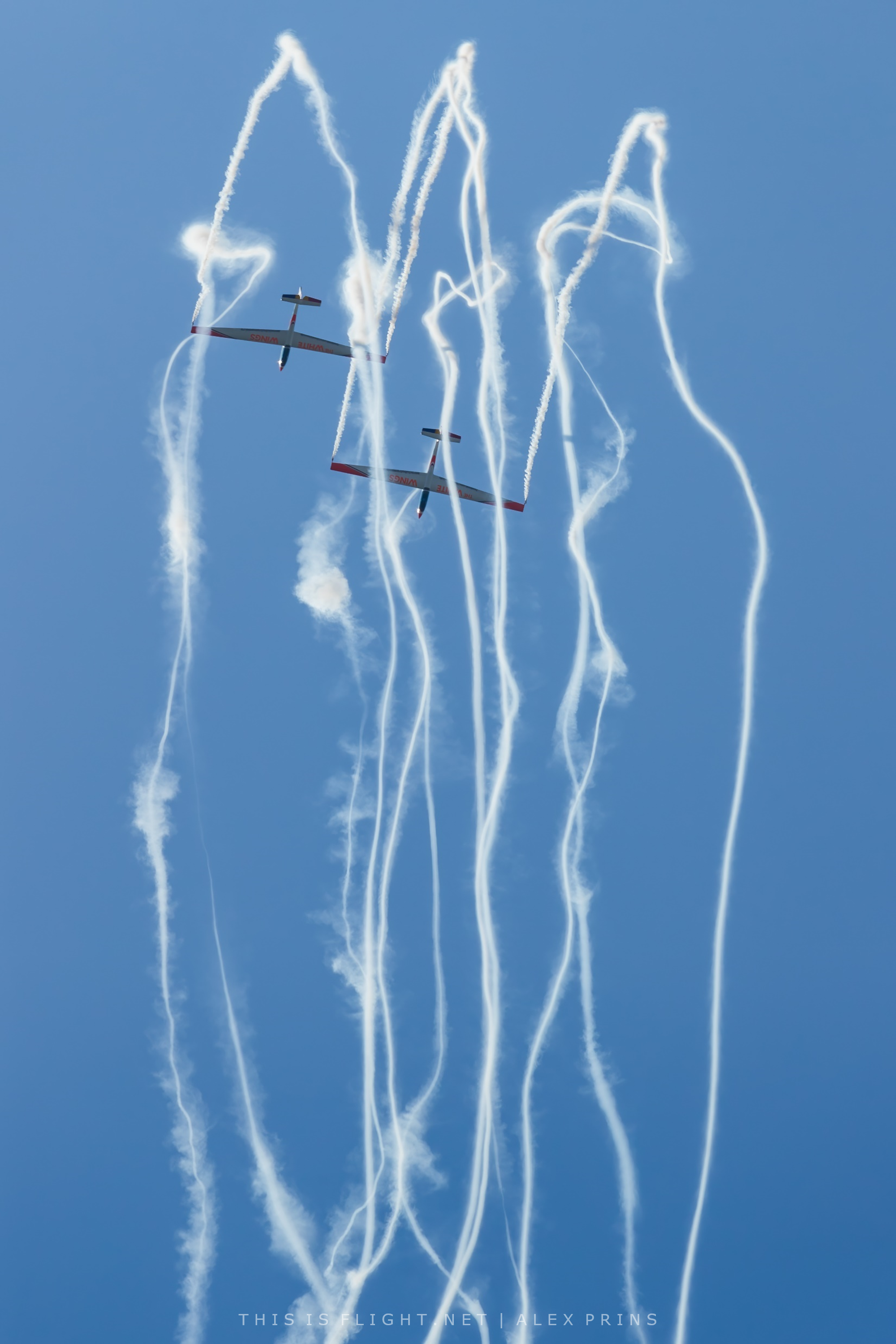
As the sun touched the horizon, there was an interlude of military acts, including the aforementioned Badge Formation, NH90, F-16 and C-130 solo displays. Once the C-130 exited, it was time to commence the pyrotechnic performances, starting with a ‘roll on tow’ by Guy Westgate in his S-1 Swift glider. Then came Bob Grimstead in his Fournier RF-4D, now in his final season as an aerobatic display pilot. This was probably his last public airshow appearance outside the United Kingdom.
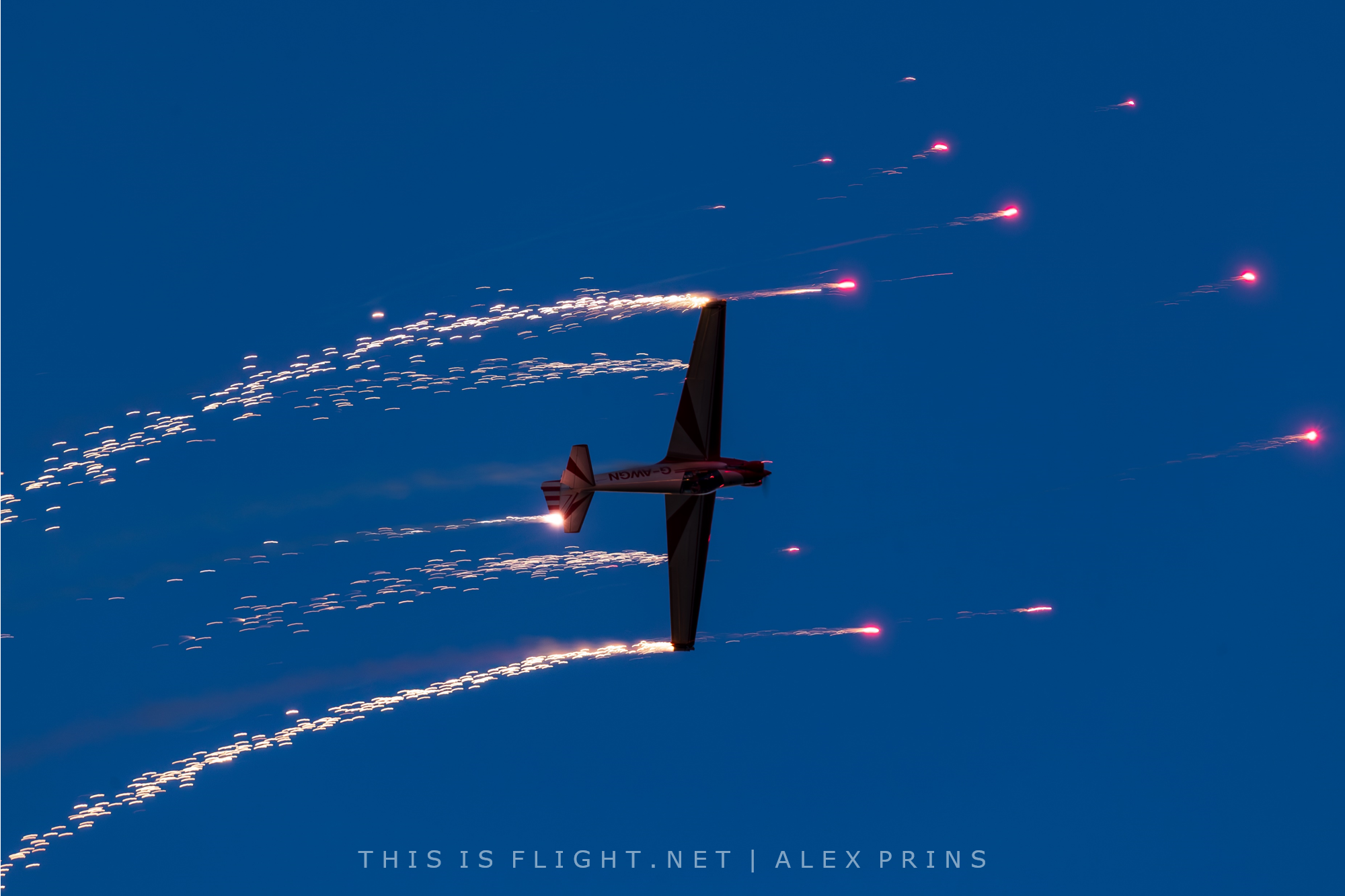
After Bob came one of the surprise highlights of the day: Aerobatic Team Anbo from Lithuania, flying three Yak-50s. Their display was quite long, but on this occasion there were no complaints, as it cantered through three distinct phases: low-level formation aerobatics with smoke, then some higher-altitude formation work with pyrotechnics, and finally some extreme low level flybys accompanied by fireworks launched from the ground. The most eye-catching moments of their routine included two aircraft flying a sequence of loops that were repeatedly and accurately pierced by a soloist, and a very impressive pass down the runway flying down an avenue of fireworks being launched from the ground either side of them.
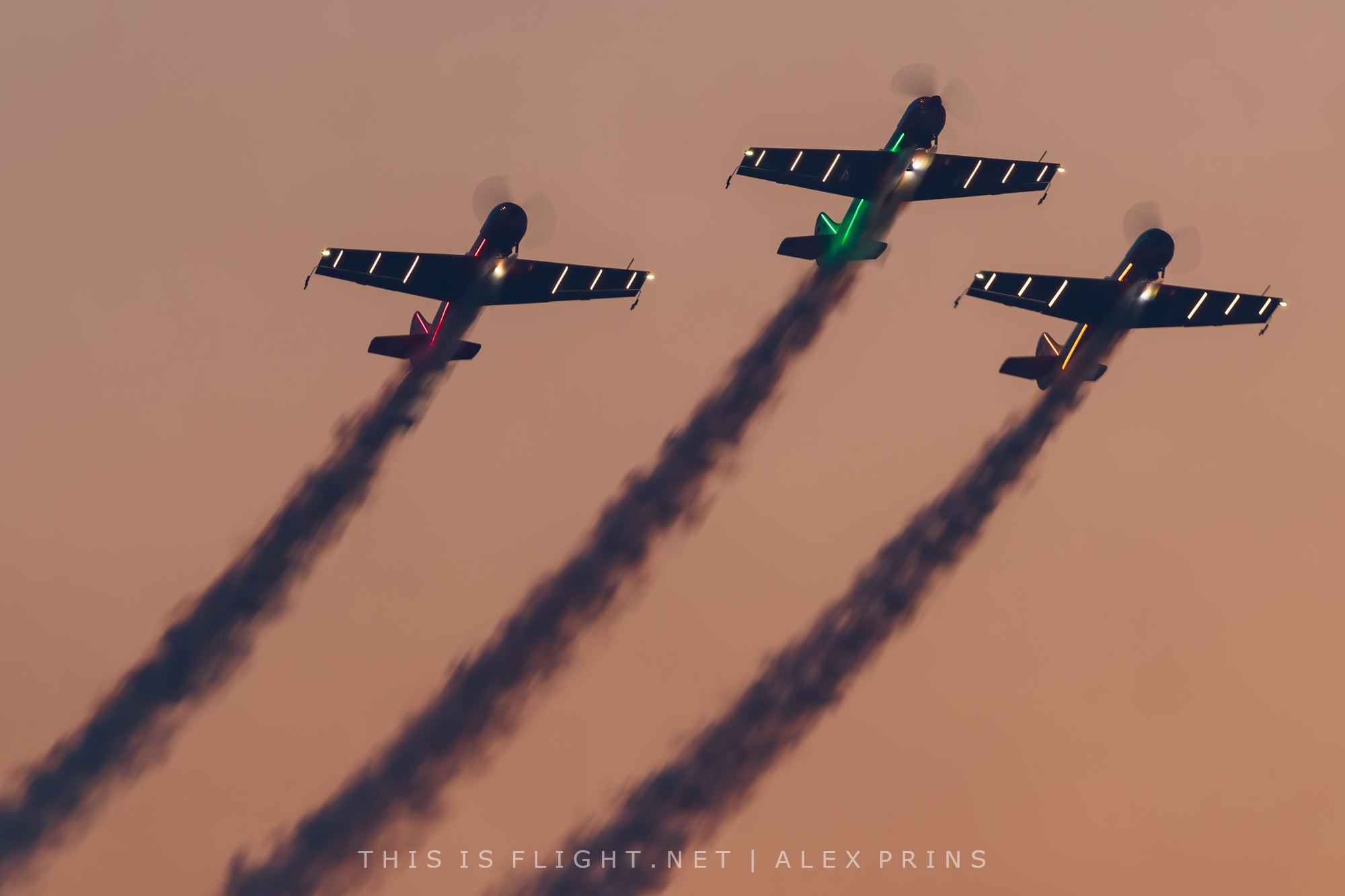
Guy Westgate returned next for the briefest of glider solo displays – a routine that only lasted about two minutes, but one which left quite an impression. We have seen Guy’s glider displays many times, but this stands out as the best yet, notable for the very effective use of Roman candles suddenly firing forward at the apogee of a tailslide, and a dramatic gyroscopic flick, again with candles, creating the effect of a Catherine wheel in the sky.
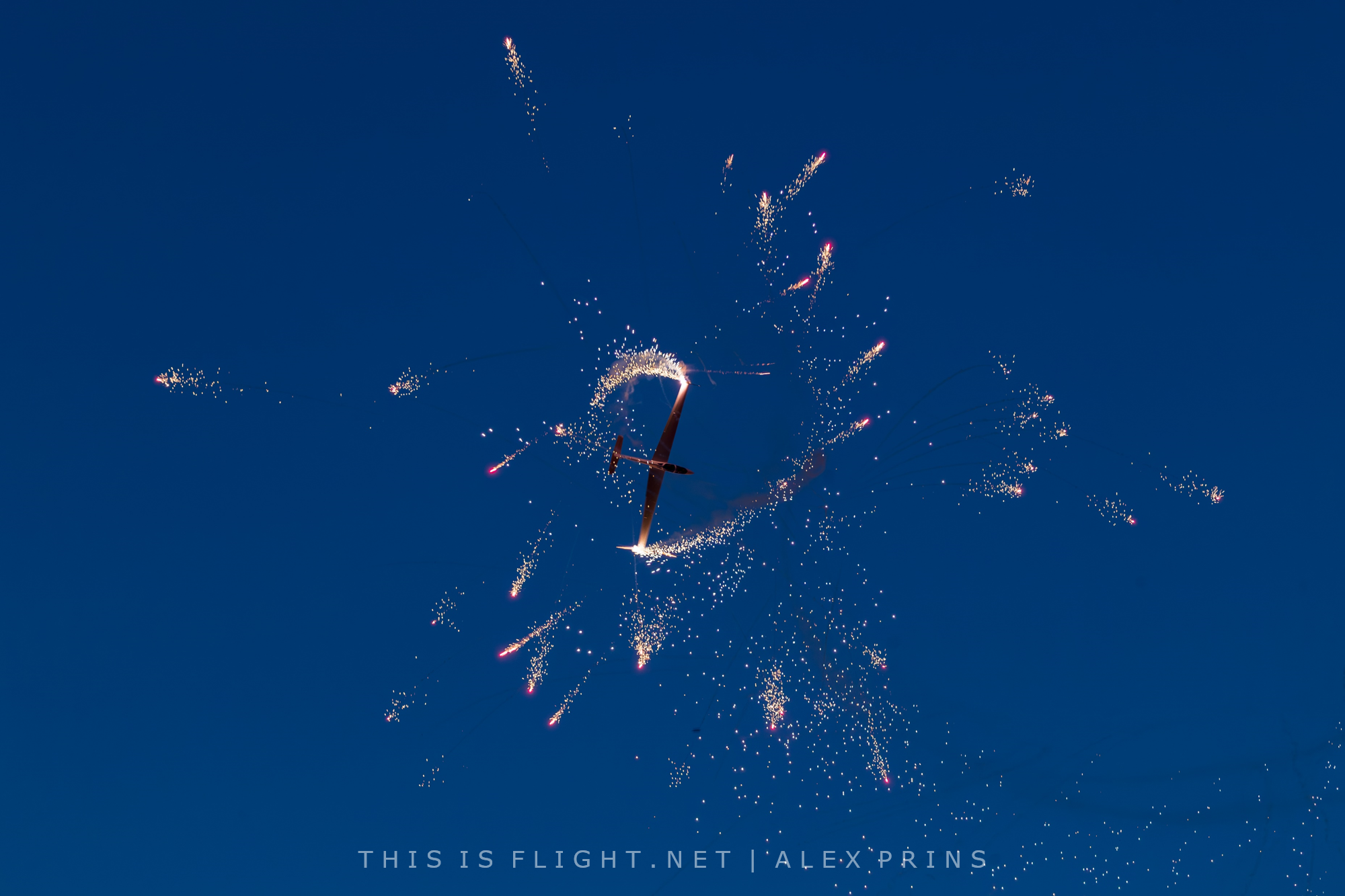
Another display that can be surmised as “short” was that of Heliforce with their Mil Mi-2. There were high hopes for this display, regarded as being at the pinnacle of European night show performances, but in fact it was the earlier day show that attracted more attention. The borderline-aerobatic daytime routine was almost as impressive as a rotary-wing airshow performance gets, but the night show was less so, only lasting three minutes and with the helicopter never leaving the hover. It was an air-launched firework display, as opposed to an airshow performance.

Next came the four Motolotnia microlights of the Fire Moths flying through the middle of a drone swarm. It was the first time this had been done at an airshow, and was worth seeing on grounds of novelty, but perhaps had less visual impact than expected – not least because, to the naked eye, it wasn’t at all clear whether the aircraft were flying through the drones, or merely past them. They then cleared the airspace for the Flying Dragons, which entered the display area for a performance that would have raised the roof had there been one: a staggeringly effective combination of music, lights, pyrotechnics and paramotors that left as big an impression on the spectators as almost anything else that day.

Here followed a pause in proceedings while the team got set up for the Antidotum Airshow Grand Finale. This was quite an undertaking: a kind of airshow performance never seen before: bringing together the live orchestra, fireworks, hot air balloons, a remote control model, jets, a helicopter and various other aircraft in a single ten minute performance. This looked rather different on the two days; on Friday, high wind and a problem with the pyro firing system grounded the hot air balloons, and the pilots were perhaps still feeling things out as the timings were often a little out. It was, in effect, a de facto rehearsal for Saturday. But Saturday’s performance ran almost like clockwork. From the three-layer parallax of RC model, hot air balloons and Bushcat (with all three firing pyrotechnics) to the pair of TS-11 Iskras shooting past and dumping flares, through to the final manoeuvre – a huge wall of fireworks while a Bokow Bo105 climbed near-vertical, shooting comets in all directions – it was a relentless, fast paced extravaganza as the entire airfield lit up in one of the most ambitious airshow performances staged in recent times.
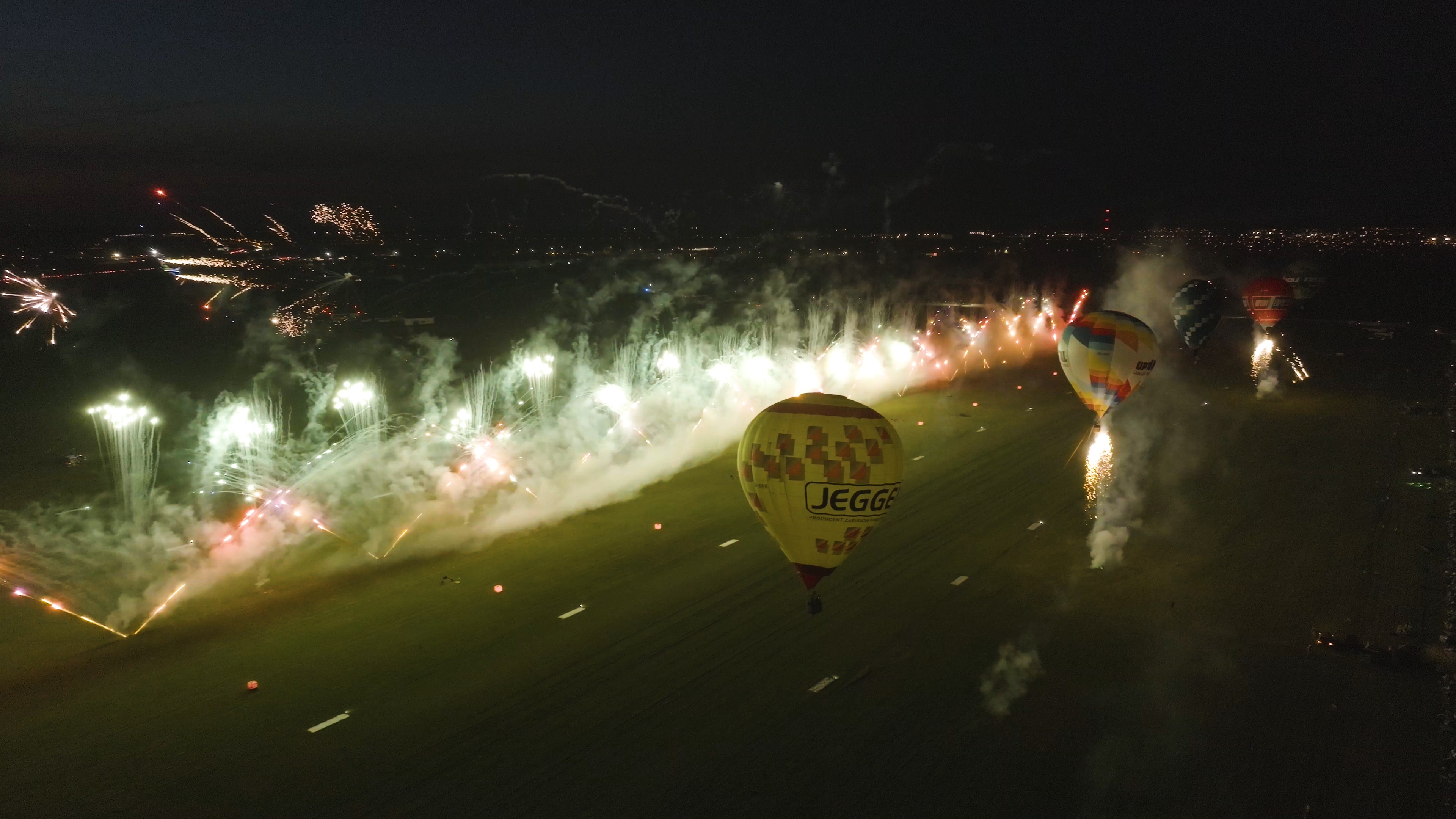
Those that bore witness to this, from the airshow rookie to the likes of airshow veteran Bob Grimstead, recognised that it was globally unique on any scale. To combine six different display acts from across Europe, not just for a series of flypasts but a totally integrated display, at night, choreographed to the second in timing with fireworks and live music: it would be almost unthinkable were it not for the fact that it was not only thought, it was done!
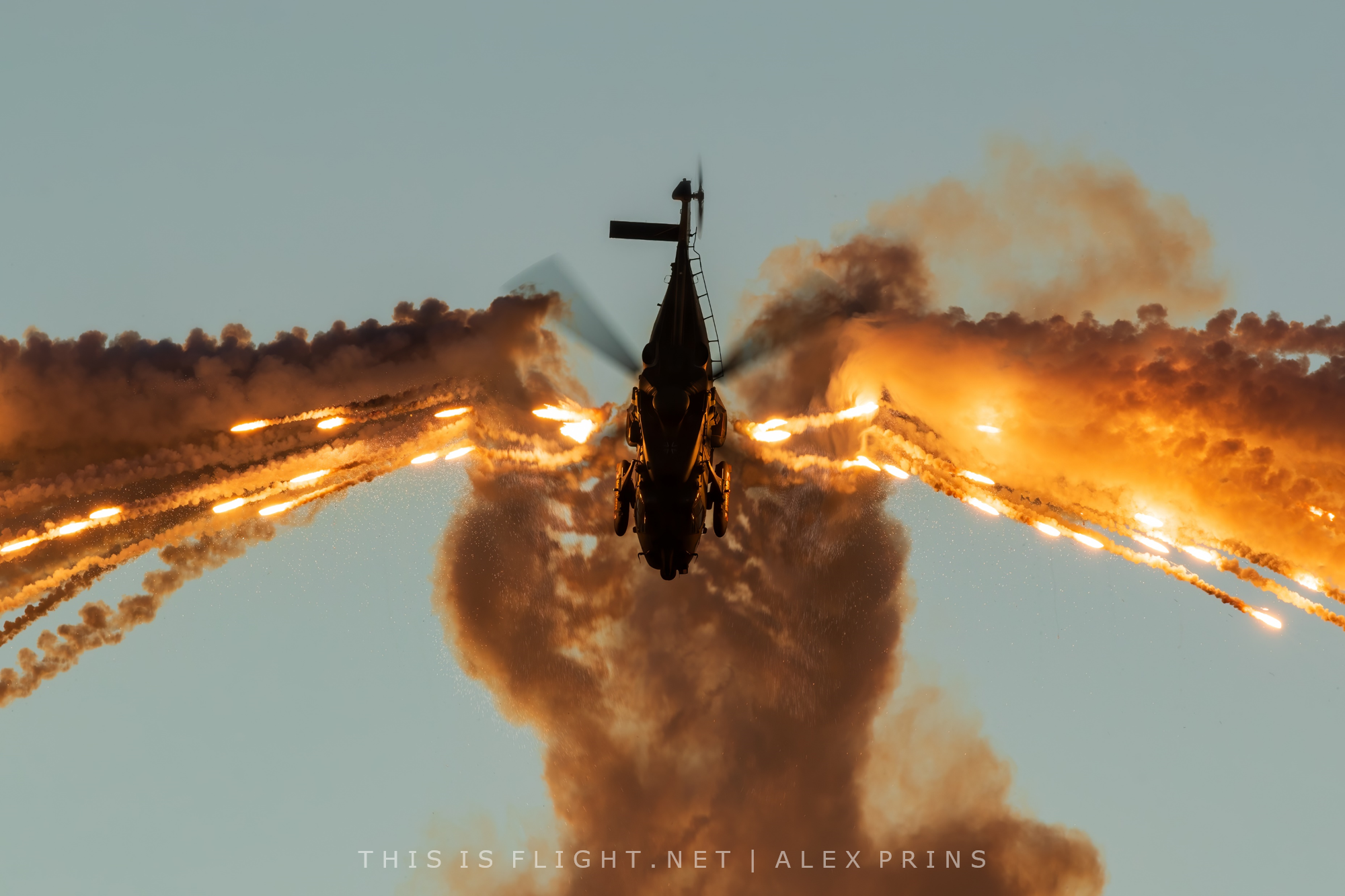
There were hurdles of course: financial, logistical and regulatory. There were cancellations: Antidotum stalwarts AeroSparx were blighted by logistical problems after another display overseas, which led to an eleventh-hour redraft of the finale – Scandinavian Airshow’s Ag Cat gallantly filling the gap left. All of this added a context that made my enjoyment all the more total, and left me in the privileged position of seeing two of the creative forces behind the spectacle, Adam and Michał Graczyk, share an embrace at the conclusion of Saturday’s finale. This is what makes the Antidotum so special: it’s not about the aircraft themselves, it’s about using those aircraft as tools with which to make art. And it was art. It was the creative product of human endeavour, imagination and emotion. Saturday’s Grand Finale belonged in a gallery; it took the benchmark of what could be achieved with a modest budget at a gliding club, and utterly disregarded it.

This report breaks the sacred rule of impartiality: I count the organisers and visionaries behind the Antidotum Airshow among my friends. But this also gives me a view behind the magicians curtain, at the determination, sweat and tears, that goes into every Antidotum Airshow. With the flying display broken into constituent parts, you could argue that it was not even the strongest Leszno line-up ever, yet the evidence of progress remains clear to see. The quantity of airshow debuts this year was significant, and though much of it was the culmination of years of effort, this organisation is never satisfied, and in all cases there are exciting avenues for expansion. Already, the early indications are that the Antidotum Airshow 2026 will be one step beyond. I will conclude with something that I felt compelled to write down on the evening I returned home after this year’s show: an attempt to capture the feeling I always have when the final firework fizzles out overhead Leszno, and the last engine is shut down.
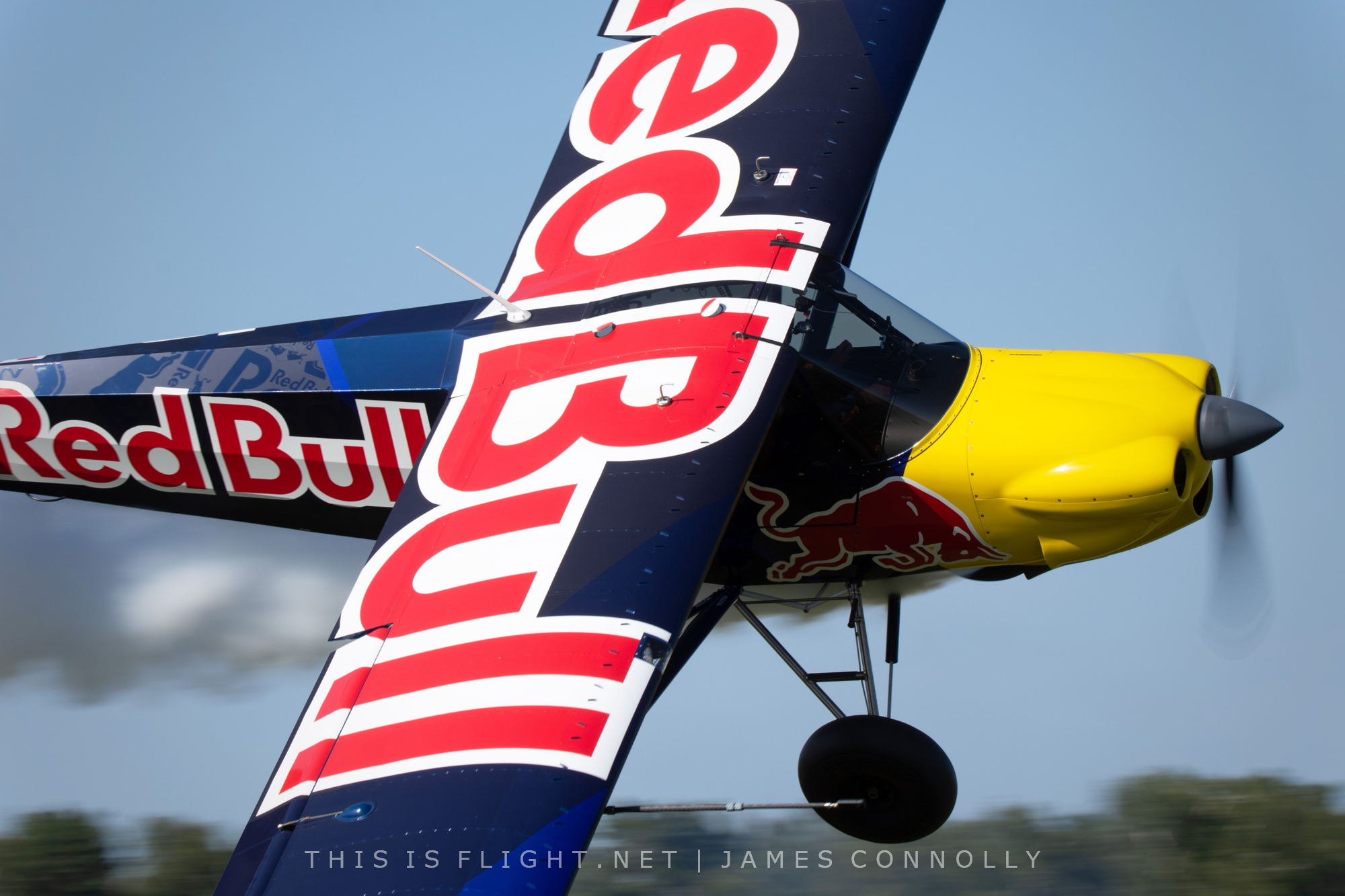
In life nothing is ever perfect, it’s practically unattainable, and to chase it can drive one to madness. But for one weekend every summer, one airshow can be relied upon to create something magical and achieve the impossible: perfection.